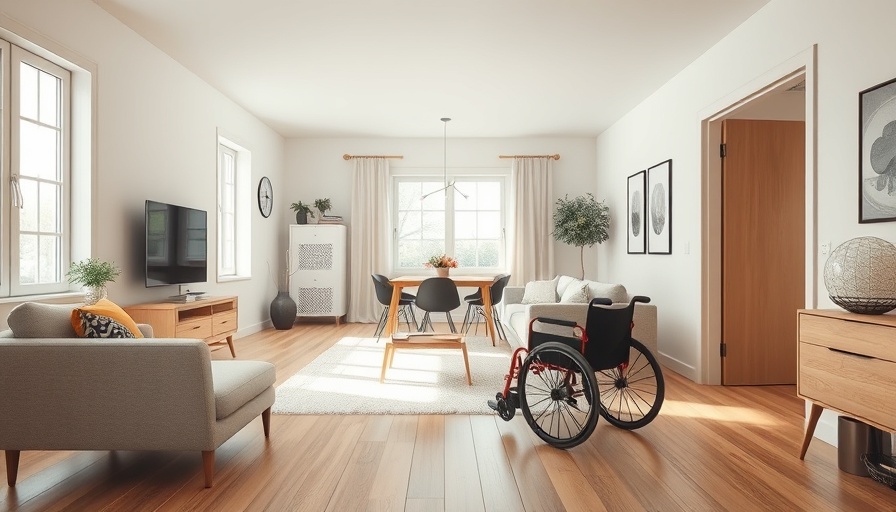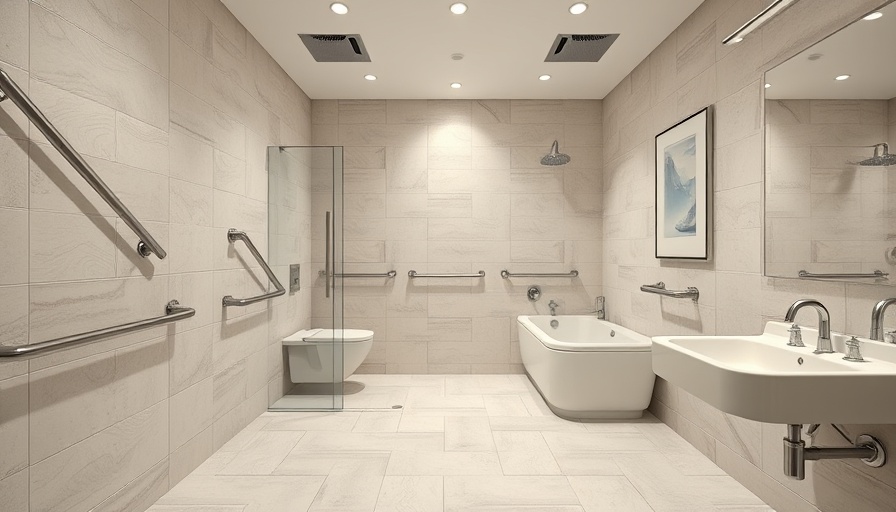
Creating Homes Where Everyone Belongs
In our ever-diversifying society, ensuring everyone feels welcome within our homes transcends simple compliance with regulations. The significance of home accessibility lies not just in functionality, but in fostering an environment where dignity and independence thrive for every occupant and guest. From the elderly to young children, everyone should navigate living spaces with comfort and ease. This article provides valuable insights to help homeowners create inclusive spaces, ultimately transforming lifestyle experiences.
Understanding the Importance of Home Accessibility
Home accessibility is an essential consideration for any homeowner, as it goes beyond mere modifications; it embodies the spirit of inclusivity. When homeowners prioritize accessibility, they affirm that they respect and value the diversity of those entering their living spaces. The concept recognizes various physical and cognitive abilities and aims to facilitate usability and safety for all.
Additionally, accessible homes can appreciate in value over time. By creating accommodations that appeal to wider audiences, potential buyers are likely to show increased interest, significantly bolstering future marketability. Thus, investing in accessibility enhancements is not just an ethical commitment, but a strategic real estate decision.
Conducting a Thoughtful Home Accessibility Assessment
Before embarking on modifications, conducting a thorough accessibility assessment is vital. This initial step allows homeowners to pinpoint barriers affecting movement and accessibility throughout the house. Start by strolling through each room, making detailed notes of trouble spots such as narrow hallways, steep stairs, and uneven flooring.
Consider the needs of all occupants, especially elderly relatives or family members with mobility difficulties. Resources with checklists from reputable accessibility organizations can offer guidance in ensuring no details are overlooked. By gathering ample information, homeowners can prioritize changes based on urgency and feasibility, determining if some alterations require professional help.
Key Features for an Accessible Home
To implement effective accessibility improvements, homeowners should focus on several essential features:
- Entryways: All entrances should feature minimal steps, wide doorways, and non-slip surfaces to facilitate smoother access.
- Staircases: Adding grab bars, treads, and lighting can help mitigate the risks of falls and enhance overall safety.
- Bathroom Accessibility: Incorporate grab bars near toilets and in showers/bathtubs, and consider a curbless shower design for easier entry. Installing a shower bench can also prove invaluable.
- Kitchen Layout: Ensure that countertops and sinks are within reach, and consider pull-out shelves for better accessibility.
By prioritizing these key features, homeowners can significantly improve overall function while catering to diverse needs.
The Emotional Landscape of Home Modifications
Accessibility is more than just physical changes; it carries emotional weight as well. Creating inclusive spaces can enhance the sense of belonging for family members or friends within the home. Imagine hosting holiday gatherings with ease, where everyone feels comfortable interacting and participating in activities. Accessibility can forge strong connections by alleviating fears and anxieties associated with mobility limitations.
Recognizing the emotional landscape also implies being receptive to feedback and insights from users themselves, which can further tailor enhancements in ways that resonate deeply with their unique needs.
Counterarguments and Diverse Perspectives on Accessibility
While many champion the cause of home accessibility, some may argue that modifications can be costly or complex. Seeking multiple perspectives is crucial to understanding the broader implications of accessibility. It’s vital to communicate that even simple adjustments may yield significant benefits and affirm one's commitment to inclusivity.
Engaging in conversations with individuals who have undergone similar modifications can further encourage potential changes. They can offer testimonies of how accessibility has positively transformed their daily lives.
Turning Insight Into Action: DIY Accessibility Upgrades
Homeowners can embark on meaningful DIY accessibility projects tailored to their specific needs and budget. Simple tasks, such as rearranging furniture to create wider pathways or installing lever-style handles on doors, can immediately improve accessibility without hefty financial investments. These upgrades represent manageable actions that empower homeowners to start creating inclusive spaces.
In addition, learning about available tools and resources can help facilitate meaningful upgrades. Online platforms dedicated to accessibility modification tips offer both inspiration and guidance to help translate ideas into tangible changes.
Final Thoughts on Building a More Inclusive Home
Creating inclusive spaces not only benefits individuals with mobility challenges but enriches the entire household. As more homeowners recognize the value of accessibility, we collectively foster a society where everyone can navigate their living spaces with dignity and ease. Let us take these insights to heart and initiate the journey towards inclusivity today.
By actively engaging in the accessibility assessment and implementation process, homeowners gain the chance to create welcoming environments for all visitors, helping to shape a better future.
Please join this movement for inclusivity by signing our accessibility pledge and committing to fostering welcoming home environments for everyone.
 Add Row
Add Row  Add
Add 




 Add Row
Add Row  Add
Add 

Write A Comment